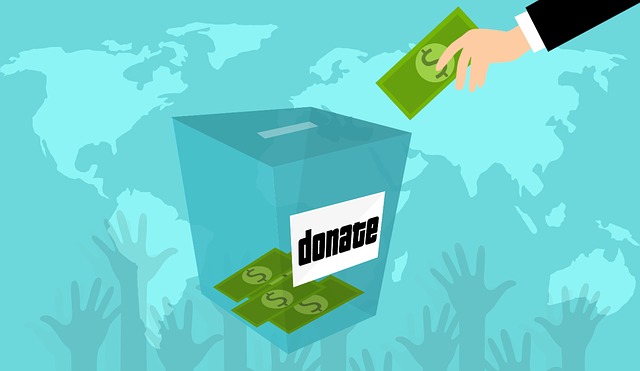
Preview of Upcoming Nationwide-Injunction Oral Argument
05.09.2025 | Linda J. Rosenthal, JD

For charities around the globe, the month of December is traditionally the major focus of fundraising. And, for the past decade, this key critical financial effort has been jump started by GivingTuesday each year in late November.
While it’s too early to report definitive results from yesterday’s efforts, there were predictions of an increase over the 2021 tally, which – in turn – was up from 2020 and 2019.
And U.S. organizers and potential charity recipients are encouraged by early robust shopping numbers from Black Friday which also were up a few percentage points over 2021. If Americans are not necessarily holding back in holiday spending despite economic pressures and uncertainties, then they may be generous as well in their charitable giving.
Nevertheless, as we highlighted recently in Another Turbulent Year for Nonprofits (November 14, 2022), it’s been “… another chaotic year for the nonprofit sector with the highest inflation rates in four decades savaging budgets and adding to the surprise woes of the Great Resignation and a possible recession on the horizon. ‘[I]nflation is testing the financial stability of nonprofit organizations which managed to survive the pandemic.’”
While it’s certainly true that charities already called on supporters and funders for extra help during the pandemic – and particularly in 2020 – most groups are, unfortunately, not out of the woods yet. This year, don’t shrink from pointing out the obvious, particularly to established donors: Rising costs of all sorts are crippling operations and draining reserves. If a person ordinarily gives $X a year, then it’s not unreasonable or overbearing to ask for just a bit more (at least) this year. Anyone who’s been in a grocery store recently can relate to shockingly higher prices on every item and will understand the request.
With that in mind, it’s a good time to highlight a few points about charitable-giving campaigns that we’ve made over the years and are still important to remember.
Even in our brave new world of online giving, crowdfunding, and various novelties of payment, it’s all still “fundraising” as that term is understood by each and every government regulator looking over your shoulder. Each time anyone clicks the “donate” button on your website, it may trigger registration duties and other legal requirements – not only in your own state of incorporation but beyond those borders to other jurisdictions.
“Simply being recognized by the IRS as a nonprofit organization does not permit you to fundraise. States are the regulators of charitable solicitation,” according to the authors of How Nonprofits Can Stay Compliant with Online Fundraising Laws in 2022 (April 18, 2022) nptechforgood.com. And “… states define solicitation as the act of asking for donations, regardless of the method of solicitation.”
They explain also: “Fundraising registration is generally required in any state in which you want to solicit funds, and states deem that solicitation occurs where your fundraising request is received. So before you fundraise, you may be required to first register in each state where the donors you will solicit are located, then regularly renew the registrations.”
The National Association of State Charities Officials’ most recently updated guide and spreadsheet is: Updated State Charity Registration Provisions Survey for 2021 (July 2021).
See also: Online Fundraising Compliance Guide: What Nonprofits Need To Know Harbor Compliance & Labyrinth, Inc. 9 pp. PDF downloadable
More specifically, for California organizations, the Attorney General’s office has reference guides including: Attorney General’s Guide for Charities, (updated June 2021); Chapter 9 “Fundraising” and the Attorney General’s Guide for Online Charitable Giving (July 2019). See also, our earlier posts: Online Charitable Giving: Cal AG’s New Guide (September 17, 2019) and Issues in Online Giving (June 27, 2017).
Since the earliest days of this blog over eight years ago, we’ve regaled you with tales of tainted donations or donors, overbearing philanthropists tying you down with unbearable conditions, property gifts-turned-albatross, and other horror stories of gifts-gone-bad.
Inflation is roaring, more people are asking for your services, and you may be short-staffed. Nevertheless, that doesn’t mean that you should take anything and everything that walks in the door. Sometimes the cost of a gift can be much too high to justify. It’s okay to just say no.
“A simple example of a donation category that may pose problems is a non-cash gift that is too difficult or expensive to accept – think a racehorse or an out-of-the-way property with a hazardous business on it.” See our discussion last year in Reviewing Donation-Related Policies (May 18, 2021). “Another type of charitable contribution that should be politely rejected is one that comes with too many or cumbersome strings and restrictions, or that is out of sync with the organization’s mission or values.
And another reason to say a firm “no” to a donation is that it’s “tainted”: “Either the donor is unsavory or that person’s money arises from an objectionable source or method. Sadly, this is fairly prevalent. Consider the too-frequent headlines about upright citizens who have recently been unmasked as scoundrels.”
See for example:
Perhaps the best way to avoid contribution-catastrophe is to have a carefully drawn “gift acceptance policy” in place ahead of the time that you ask for donations or are approached by potential donors. See Reviewing Donation-Related Policies (May 18, 2021) “A well-considered and tightly drafted gift-acceptance policy helps an organization in several ways.” See Gift-Acceptance Policies, National Council of Nonprofits.
Since it’s set in place ahead of a prospective solicitation or offer of a donation, a donor won’t feel disrespected or singled out if the gift is not accepted. Also, it’s a guidepost for board, senior staff, and fundraisers.
Because the policy serves several purposes, many organizations prepare multiple document templates for different audiences. For instance, a formal document titled “Gift-Acceptance Policy” that’s directed at the general public can be posted on the website or provided on request. And there can be one or more internal guides or explanations that help insiders understand the policy itself and the reasons for each provision. An example is a procedural manual setting out the way that the board, staff, fundraisers, and volunteers should handle and evaluate prospective non-cash donations.
“Having a gift acceptance policy in place is considered a ‘best practice’ from multiple perspectives – whether relating to relationships with donors or managing the nonprofit’s own risks.” Indeed, Schedule M of Form 990 (Non-Cash Contributions) specifically asks the filing organization if it has a gift acceptance policy in place. That Schedule must be submitted by nonprofits that received: (a) more than $25,000 in non-cash contributions; (b) donations of artwork or historical treasures or similar assets; or (c) gifts of qualified conservation contributions.
In any event, creating and adopting a gift-acceptance policy encourages the organization’s board and staff to carefully review the experiences of other nonprofits and development professionals, gain insight into potential problems with various categories of gifts, and evaluate which types of gifts should and should not be accepted. “It should be a collaborative process involving the planned giving staff, the organization’s director or president, the board’s committee responsible for oversight, and the professional advisory committee or advisor.”
A good policy will help set out issues concerning the types of gifts that are acceptable or unacceptable as well as procedures and requirements for receipt, tracking, and handling of non-cash donations.
A second and complementary document in many situation is a “Gift Agreement.” As we explained in Reviewing Donation-Related Policies (May 18, 2021): “A donation [or gift] agreement may be used to ensure that a donor’s promise can be relied upon, set the expectations of both donor and donee, and prevent misunderstandings. It’s different from a gift-acceptance policy, although often the two are confused or conflated. The gift agreement is ‘expressly for the purpose of spelling out and documenting what the donor expects and what the nonprofit is committed to providing.”’
“In federal tax law, sometimes forgetting to dot an “i” or cross a “t” isn’t a fatal error,” we wrote a few months ago in Charitable Deduction Rules: Beware “Sharp Corners” (August 29, 2022). “But, for the substantiation of charitable deductions, ‘almost good enough’ is not enough.”
See Charitable Organizations – Substantiation and Disclosure Requirements on the IRS website. “A donor can deduct a charitable contribution of $250 or more only if the donor has a written acknowledgment from the charitable organization.”
“The donor must get the acknowledgement by the earlier of: (1) The date the donor files the original return for the year the contribution is made, or (2) The due date, including extensions, for filing the return” [bolding in original]. Note also that the “donor is responsible for requesting and obtaining the written acknowledgement from the donee.”
See also the fuller description of requirements in the 9-page IRS Publication 1771 – Charitable Contributions: Substantiation and Disclosure Requirements (Rev. 3-2016.
For the purpose of complying with all of the substantiation rules, a “gift-acknowledgment letter” is a helpful addition to your organization’s donation-related written documents. “‘Gift-acknowledgment letters are important for two reasons,’ according to the experts at Candid Learning. ‘First, they provide proof so donors can claim a tax deduction. Second, they let you thank donors for their generosity, helping you build a relationship for future support.’”
The gift-acknowledgment letter, “serves a critical public-relations function”; it’s the chance to address donors “personally and sincerely.”
And, of course, the personal touch with your donors is important all year round, as we mentioned in Nonprofits: What Not to Do (July 13, 2021). The University of South Carolina’s fundraising staff learned a hard lesson when they failed to acknowledge the death of the mother of their biggest donor. They “… apparently thought it was a good idea to let her grieve in peace.” The donor disagreed; she cut off all future giving to the school. See USC’s biggest donor writes off school after it fails to acknowledge her mother’s death (April 6, 2021) Andy Shain, The Post & Courier (S. Carolina).
– Linda J. Rosenthal, J.D., FPLG Information & Research Director